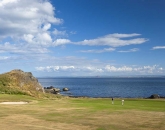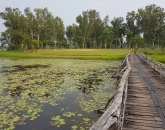
The Games of the 31st Olympiad are just four years away and at long last, the turning of the first sod on the site of the Rio course will occur in a matter of weeks.
Gil Hanse and his collaborative partner on the project, LPGA Hall of Famer Amy Alcott, were successful over a stellar field of bidding designers that included Jack Nicklaus and Annika Sorenstam, Greg Norman and Lorena Ochoa; Peter Thomson and Karrie Webb, Gary Player and Robert Trent Jones II among others for the right to build the golf course in Barra da Tijuca to the southwest of Rio De Janeiro, where many of the Games’ venues will be located.
Hanse’s name may not yet be as high profile around the world as many of the above but any anonymity he might currently enjoy is fading rapidly. His credentials and the appreciation for a growing body of fine work are seeing to that, as will the scrutiny he is about to be placed under over the next few years for his work in Brazil.
Hanse was awarded US Golf Magazine's ‘Architect of the Year' in 2009 and recent projects from his design team have been standouts and highly acclaimed. The Boston Golf Club in Massachusetts and the venue for the Scottish Open on the European Tour – Castle Stuart – have received rave reviews, the latter including the plaudits of the elite players that have competed at the Scottish to round off their preparations for the Open Championship the following week.
The Rio 2016 Organising Committee awarded the project to Hanse in March 2012 after a very protracted process that is, hopefully, not a set of circumstances that is going to prove to be synonymous with the construction of the golf course. At the time of writing, a legal dispute over the ownership of the land threatened to derail a construction process that is already working to a less than ideal timeframe. Time is now of the essence to ensure the project is not only completed but allowed time to sufficiently mature for the optimum conditioning expected of a 'championship’ layout to host the world’s finest players.
Pages
Click here to see the published article.











